اتفاية ترسيم الحدود البحرية مع قبرص
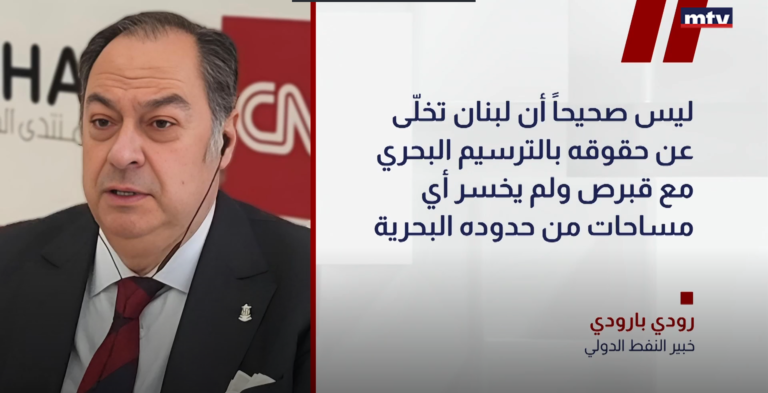


The upcoming UN Climate Change Conference (COP30) will be the first to take place in the Amazon, sending a powerful symbolic message about the central role developing economies must play in the global response to the climate crisis. But at a time of geopolitical fragmentation and low trust in multilateralism, symbolism is not enough. Developing economies must plan and propel the green transition. Africa is no exception.
So far, Africa’s climate narrative has been one of victimhood: the continent contributes less than 4% of global greenhouse-gas emissions, but it is highly vulnerable to the effects of climate change. This disparity fuelled the calls for “climate justice” that helped to produce ambitious climate-financing pledges from the industrialised economies at past COPs. But with those pledges going unfulfilled, and Africa’s climate-finance needs rising fast, moral appeals are clearly not enough.
A shift to a more strategy-oriented discourse is already underway. The Second Africa Climate Summit (ACS2), which took place in Addis Ababa last month, positioned the continent as a united actor capable of shaping global climate negotiations. It also produced several initiatives, such as the Africa Climate Innovation Compact and the African Climate Facility, that promise to strengthen Africa’s position in efforts to ensure a sustainable future.
Instead of continuing to wait for aid, Africa is now seeking to attract investment in its green transition, not because rich countries “owe” Africans – though they do – but rather because Africa can help the world tackle climate change. But success will require progress on four fronts, all of which will be addressed at COP30.
The first is the cost of capital. Because systemic bias is embedded in credit-rating methodologies and global prudential rules, African countries face the world’s highest borrowing costs. This deters private capital, without which climate finance cannot flow at scale. While multilateral development banks (MDBs) can help to bridge the gap, they typically favour loans – which increase African countries’ already-formidable debt burdens – rather than grants.
At COP29, developed economies agreed to raise “at least” $300bn per year for developing-country climate action by 2035, as part of a wider goal for all actors to mobilise at least $1.3tn per year. If these targets are to be reached, however, systemic reform is essential. This includes changes to MDB governance, so that African countries have a greater voice, and increased grant-based financing. Reform also must include recognition of African financial institutions with preferred creditor status, and the cultivation of a new Africa-led financial architecture that lowers the cost of capital.
The second area where progress is essential is carbon markets. Despite its huge potential for nature-based climate solutions, Africa captures only 16% of the global carbon-credit market. Moreover, the projects are largely underregulated and poorly priced, with limited community involvement. Africa is now at risk of falling into a familiar trap: supplying cheap offsets for external actors’ emissions, while reaping few benefits for its people.
While some African countries are developing their own carbon-market regulations, a fragmented system will have limited impact. What Africa needs is an integrated carbon market, regulated by Africans, to ensure the quality of projects, set fair prices, and channel revenues toward local development priorities, including conservation, renewable energy, and resilient agriculture. This system should be linked with Article 6 of the Paris climate agreement, which aims to facilitate the voluntary trading of carbon credits among countries.
The third imperative for Africa at COP30 is to redefine adaptation. Rather than treating it primarily as a humanitarian project, governments must integrate adaptation into their industrial policies. After all, investment in climate-resilient agriculture, infrastructure, and water systems generates jobs, fosters innovation, and spurs market integration.
By linking adaptation to industrialisation, Africa can continue what it started at ACS2, shifting the narrative from vulnerability to value creation. Africa should push for this approach to be reflected in the indicators for the Global Goal on Adaptation, which are set to be finalised at COP30. The continent’s leaders should also call for adaptation finance to be integrated into broader trade and technology frameworks.
The final priority area for Africa at COP30 is critical minerals. Africa possesses roughly 85% of the world’s manganese, 80% of its platinum and chromium, 47% of its cobalt, 21% of its graphite, and 6% of its copper. In 2022, the Democratic Republic of the Congo alone accounted for over 70% of global cobalt production.
But Africa knows all too well that natural-resource wealth does not necessarily translate into economic growth and development. Only by building value chains on the continent can Africa avoid the “resource curse” and ensure that its critical-mineral wealth generates local jobs and industries. This imperative must be reflected in discussions within the Just Transition Work Programme at COP30.
These four priorities are linked by a deeper philosophical imperative. The extractive logic of the past – in which industrialisation depended on exploitation and destruction – must give way to a more holistic, just, and balanced approach, which recognises that humans belong to nature, not the other way around. Africa can help to lead this shift, beginning at COP30.
The barriers to progress are formidable. China likes to tout South-South solidarity, but it does not necessarily put its money where its mouth is. The European Union is struggling to reconcile competing priorities and cope with political volatility. The US will not attend COP30 at all, potentially emboldening others to resist ambitious action. If consensus proves elusive, parties might pursue “mini-lateral” deals, which sideline Africa.
When it comes to the green transition, Africa’s interests are everyone’s interests. If the continent is locked into poverty and fossil-fuel dependency, global temperatures will continue to rise rapidly. But if Africa is empowered to achieve green industrialisation, the rest of the world will gain a critical ally in the fight for a sustainable future. – Project Syndicate

Οι τεταμένες σχέσεις Ισραήλ-Λιβάνου και οι ραγδαίες εξελίξεις στη Μέση Ανατολή έχουν κινητοποιήσει τη Λευκωσία για επαφές υψηλού επιπέδου για την επικύρωση της ΑΟΖ με το Λίβανο. Ετσι ο πρόεδρος της Κύπρου Νίκος Χριστοδουλίδης συναντήθηκε με τον εμπειρογνώμονα περιφερειακής πολιτικής Ρούντι Μπραούντι, μακροχρόνιος υποστηρικτής του διαλόγου, της διπλωματίας και της ειρηνικής ανάπτυξης, ως προς τις ασφαλέστερες διαδρομές προς μεγαλύτερη σταθερότητα για ολόκληρη την Ευρω-Μεσογειακή περιοχή και άτυπο διαμεσολαβητή των δύο χωρών. Μάλιστα έχει γράψει και σχετικά βιβλία, όπως την «οριστικοποίηση Θαλάσσιων Συνόρων στην Ανατολική Μεσόγειο: Ποιος Θα Ειναι ο Επόμενος;» και «Ένα Κλειδί, Πολλαπλά Έπαθλα: Οριστικοποίηση Θαλάσσιων Συνόρων ανάμεσα στην Κύπρο, το Λίβανο και τη Συρία».
Ο κ. Χριστοδουλίδης και ο ομόλογός του από το Λίβανο, ο πρώην Γενικός Τζόζεφ Αουν, συμφώνησαν τον Ιούλιο να διαπραγματευτούν και να οριστικοποιήσουν μια γραμμή θαλάσσιων συνόρων . Και οι δύο χώρες αναμένουν ότι θα αποκομίσουν πολλά οφέλη από μια τέτοια συμφωνία, και η κατοχύρωση εδαφικών συνόρων στη θάλασσα θα καταστήσει ευκολότερη την προσέλκυση ξένων επενδυτών για την ανάπτυξη των ενεργειακών πηγών τους.
«Η επίτευξη συμφωνίας θα ανοίξει όλες τις πόρτες για την Κύπρο και το Λίβανο», δήλωσε ο κ. Μπαρούντι μετά από τη συνάντηση. «Οι τάσεις πηγαίνουν στη σωστή κατεύθυνση, και όχι μόνο σε σχέση με το Λίβανο. Ο πρόεδρος της Κύπρου έχει φιλόδοξα σχέδια εξωτερικής πολιτικής, ιδιαίτερα σχετικά με τις δραστηριότητες της Κύπρου τους πρώτους έξι μήνες του 2026, όταν θα έχει την προεδρία του συμβουλίου της Ευρωπαϊκής Ένωσης».
«Εκμεταλλεύτηκα επίσης την ευκαιρία να ευχηθώ στο πρόεδρο της Κύπρου καλή επιτυχία σε αυτή την αποστολή», πρόσθεσε, «ειδικά καθώς αναμένεται να εστιάσει όχι μόνο στην ενίσχυση της συνοχής της Ευρώπης, αλλά και στην ενίσχυση του ρόλου της Κύπρου ως γέφυρα μεταξύ Ευρώπης και γειτονικών χωρών.»
Πράγματι, η Λευκωσία έχει ένα φιλόδοξο πρόγραμμα για την προεδρία της και συνεργάζεται στενά με τη Δανία, που ασκεί την προεδρία αυτό το εξάμηνο , και την Πολωνία, που θα διαδεχθεί την Κύπρο. Η λεγόμενη«τριπλή προεδρία» βοηθά στη διασφάλιση συνέχειας από τη μία προεδρία στην επόμενη.
Ο κ. Μπαρούντι έχει γράψει αρκετά βιβλία και μελέτες σχετικά με το πώς τα υπάρχοντα εργαλεία του ΟΗΕ μπορούν να βοηθήσουν τις παράκτιες χώρες να συμφωνήσουν δίκαια και ισότιμα θαλάσσια σύνορα, να μειώσουν τις εντάσεις και να αποκομίσουν σημαντικά οικονομικά και κοινωνικά οφέλη. Έχει επίσης γράψει και μιλήσει δημόσια για διάφορες ευκαιρίες περιφερειακής συνεργασίας, από διασυνδεδεμένα ενεργειακά δίκτυα και υπεράκτια αιολικά πάρκα μέχρι κοινή διαχείριση θαλάσσιων προστατευόμενων περιοχών.
Το 2023, απονεμήθηκε στον κ. Μπαρούντι το Βραβείο Ηγεσίας από το Transatlantic Leadership Network, ένα think-tank της Ουάσινγκτον, για τη «πολύτιμη συμβολή του στην οικοδόμηση μιας ειρηνικής και ευημερούσας Ανατολικής Μεσογείου».
Σε δεκάδες άρθρα, μελέτες, εμφανίσεις στα μέσα ενημέρωσης και ομιλίες, για παράδειγμα, ο βετεράνος της κλάδου έχει τεκμηριώσει την επιχειρηματική βάση για το νησιωτικό κράτος να γίνει κέντρο επεξεργασίας και διανομής φυσικού αερίου για τους γείτονές του. Αυτό θα περιελάμβανε την Κύπρο να δημιουργήσει έναν υπόθαλάσσιο αγωγό φυσικού αερίου προς την ευρωπαϊκή ενδοχώρα, ένα εργοστάσιο υγροποιημένου φυσικού αερίου (LNG) που θα ήταν το μεγαλύτερο έργο που έχει ποτέ η χώρα, ή και υπεράκτια πλωτά συστήματα αποθήκευσης και υγροποίησης για την εξυπηρέτηση απομακρυσμένων χωρών δια θαλάσσης.
«Όλες αυτές οι μελέτες και οι παράγοντες που ανέδειξαν παραμένουν επίκαιροι σήμερα», δήλωσε ο κ. Μπαρούντι. «Η Κύπρος διαθέτει την εγγύτητα, τις τιμές γης και τις σχέσεις με τους γείτονές της για να γίνει ο συνεταιριστής όλων στις εξαγωγές ενέργειας, αλλά και να λειτουργήσει ως θεμέλιος λίθος για μια πιο σταθερή και ευημερούσα περιοχή.»
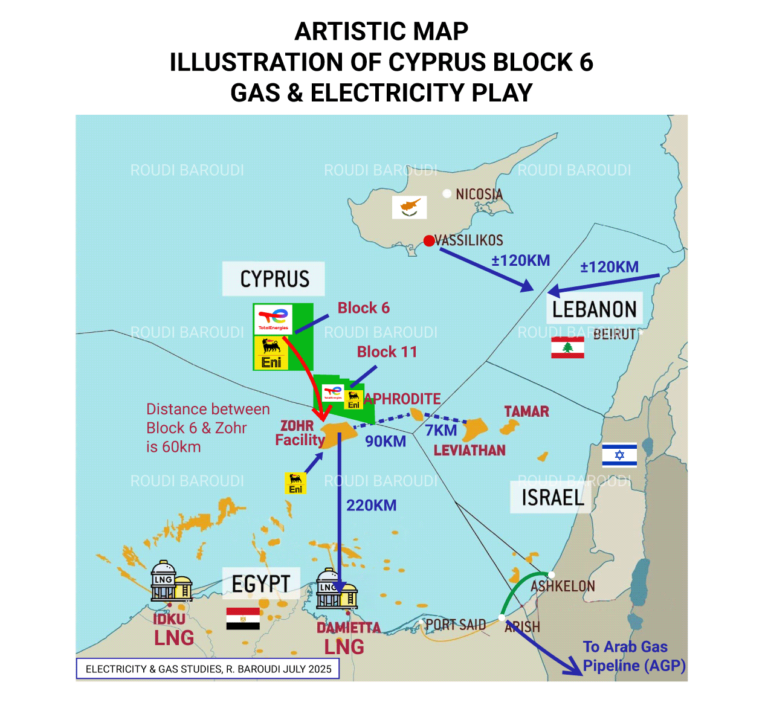
تبدو العلاقات اللبنانية القبرصية في حال تطور سريع وقد فتح هذا الباب رئيس الجمهورية العماد جوزاف عون فلاقى استجابة ورغبة عارمة لدى نظيره القبرصي كريستو دوليديس تجاه تطوير العلاقة بين البلدين الجارين وما لفت أن الرئيس القبرصي هو الذي بادر وطرح على الرئيس عون استجرار الكهرباء من قبرص إلى لبنان وقد تلقف رئيس الجمهورية اللبنانية هذه المبادرة وطلب من وزير الطاقة جو صدي متابعة الموضوع.
وفي هذا السياق أثنى خبير الطاقة الدولي رودي بارودي على مبادرة الرئيس القبرصي واللبناني، مؤكّدًا وجوب الترحيب بأي خطوة من هذا النوع باعتبارها نقطة انطلاق مهمة لتأمين الكهرباء للبنانيين وحل أزمة القطاع المستفحلة جزئياً منذ عقود وأن هذه الخطوة تأتي بعد الإعلان عن استئناف مفاوضات ترسيم الحدود البحرية بين البلدين.
كما أثنى بارودي على الدور الذي يلعبه الرئيس عون في ملف الطاقة ككل واعتباره أولوية لما فيه من فائدة على الاقتصاد وتعزيز القدرات الاجتماعية للمواطنين اللبنانيين.
ولفت بارودي إلى أن هذه الخطوة ستتيح تزويد لبنان ما بين 150 و300 ميغاواط وفق مراحل متعددة ولا سيما بعد عام أو عامين على الأكثر عندما تبدأ قبرص بإنتاج الكهرباء من الغاز المستخرج من حقولها البحرية خاصة حقل كرونوس الذي يديره كل من شركتي ENI & TOTAL ENERGIES ما يعزز تنويع مصادر الطاقة وبأسعار مقبولة لا سيما وأن الحقل المعني في قبرص لا يبعد عن حقل زهر المصري سوى ٦٠ كلم ما يعني أن كلفة الإستخراج ستكون مماثلة لتلك المعتمدة في الحقل المصري وهي كلفة رخيصة نوعا ما.
ولفت بارودي إلى وجود محطتين رئيسيتين لإنتاج الكهرباء في قبرص، إحداهما بين لارنكا وليماسول، والأخرى في Vassilikoبين ليماسول وبافوس، بقدرة إجمالية تقار ب 1600 ميغاواط من دون الكهرباء المنتجة من الطاقة الشمسية وبالتالي يمكن للبنان الاستفادة من هذه الطاقة بكلفة يتم التوافق عليها موضحا أن الكلفة ستكون اقل بكثير من كلفة الكهرباء المنتجة في لبنان عندما تبدأ قبرص العام المقبل باستخدام الغاز المستخرج من حقولها البحرية لإنتاج الكهرباء ولاسيما البلوك رقم 6.
بارودي طالب الحكومة اللبنانية بالإسراع بوضع الأطر الإصلاحية والتنظيمية للقطاع بشأن استجرار الكهرباء من قبرص وبإعداد دراسة جدوى اقتصادية تأخذ في الاعتبار كلفة الاستجرار ولفت أن محطة Vassiliko هي المحطة التي تصدر الغاز في 2026، على أن يواصل لبنان مساعيه لربط شبكته بالشبكة السورية للحصول على دعم إضافي كهربائي عن طريق محطة دير نبوح، بما في ذلك محطة الكسارة في منطقة البقاع.

Recent weeks have been multiple contacts among several countries including – Cyprus, Greece, Lebanon, and Syria – aimed at increasing cooperation among East Mediterranean countries.
This flurry of diplomatic activity provides the perfect backdrop as Notre-Dame University – Louaize is pleased to announce that it will host a book launch and signing on April 23rd, welcoming international energy expert Roudi Baroudi as he releases his latest work, “Settling Maritime Boundaries in the Eastern Mediterranean: Who Will Be Next? ”
The book outlines the need for countries in the region to resolve their maritime boundaries, the energy and other economic opportunities that doing so could open up, and the legal, scientific, and technical means of ensuring that delimitation is fair and equitable. The volume even carries exclusive, high-precision maps indicating with unprecedented accuracy where the negotiated or adjudicated sea borders of several East Med countries would be, as per United Nations rules.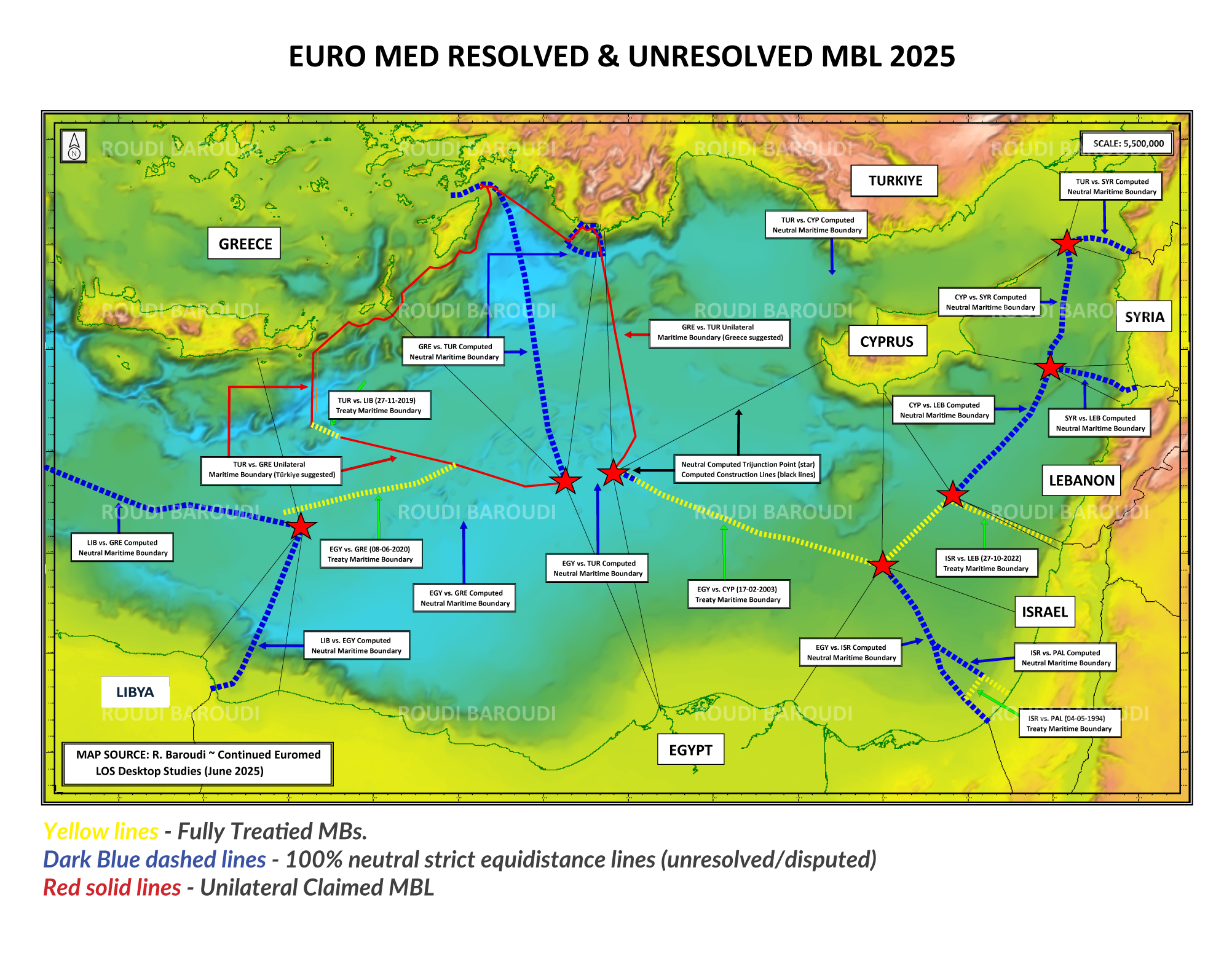
The book emphasizes that settling these unresolved boundaries – including those between Lebanon and Cyprus, Lebanon and Syria, Greece and Turkey, Turkey and Syria, Syria and Cyprus, and Turkey and Cyprus – is a necessary first step for those seeking to develop offshore energy resources. The advent of energy security and possible lucrative exports could have a profound effect on several states, allowing them to make historic investments in schools, hospitals, and transport infrastructure, all while creating well-paying jobs and reducing poverty and inequality. Baroudi also highlights a series of cross-border benefits, including reducing potential irritants between neighbors, building trust, and opening up new avenues for cooperation.
As a 47-year veteran of the energy industry, Baroudi has a wealth of experience to share, and does so frequently as an author and speaker, promoting energy as a catalyst for dialogue and peace wherever and whenever he can. He will be on hand for the launch at NDU’s Pierre Abou Khater Auditorium beginning at 12:00 noon, answering questions and signing copies of the book for anyone who purchases one.
All sale proceeds will go toward Student Financial Aid at NDU.

ATHENS, July 7, 2024 Greece: Energy and Environment Minister Theodoros Skylakakis is on the right track with his approach to Greece’s energy transition plans, a noted regional expert says.
“He’s got the right perspective,” industry veteran and author Roudi Baroudi said after Skylakakis spoke at this week’s Athens Energy Summit. “He understands that although the responsibility to reduce carbon emissions is universal, the best policy decisions don’t come in ‘one-size-fits-all’.”
Baroudi, who has more than four decades in the field and currently serves as CEO of Doha independent consultancy Energy and Environment Holding, made his comments on the sidelines of the forum, where he also was a speaker.
In his remarks, Skylakakis expressed confidence that Greece’s increasing need to store electricity – as intermittent renewables generate a growing share of electricity – would drive sufficient investment in battery capacity, without the need for subsidies. Among other comments, he also stressed the need for European Union policymakers to account for the fact that member-states currently face the cost s of both limiting future climate change AND mitigating the impacts that are already under way.
“Every country is different in terms of how it can best fight climate change. Each one has its own set of natural resources, industrial capacity, financial wherewithal, and other variables. What works in one situation might be a terrible idea elsewhere. That’s crucial and Skylakakis gets it,” Baroudi said. “He also understands that an effective transition depends on carefully considered policies, policies that attract investment to where it can not only have the greatest impact today, but also maximizes the impact of tomorrow’s technologies and tomorrow’s partnerships.”
“What Skylakakis is saying and doing fits in nicely with many of the same ideas I spoke about,” Baroudi added. “When he talks about heavier reliance on wind farms, the added storage capacity is a foundation that will help derive a fuller return from each and every turbine. When he highlights the utility – pun intended – of power and gas interconnections with other countries and regions, these are the prerequisites for peace, the building blocks for cooperation and dialogue.”
In his own speech shortly after Skylakakis’, Baroudi told the audience at the capital’s Hotel Grande Bretagne that countries in the Eastern Mediterranean should work together to increase cleaner energy production and reduce regional tensions.
“Surely there is a method by which we can re-establish the same common ground enshrined in the wake of World Wars I and II, recall the same common interests and identify new ones, and work together to achieve common goals, just as the UN Charter implores us to,” he said.
Baroudi advises companies, governments, and international institutions on energy policy and is an award-winning advocate for efforts to promote peace through dialogue and diplomacy. He told his audience that with both climate change and mounting geopolitical tensions posing threats to people around the world, policymakers needed to think outside the usual boxes.
In this way, he argued, “we might develop the mutual trust which alone can create a safer, happier, and better world for our children and grandchildren.”
“Consider the possibilities if Greece, Türkiye, and Cyprus became de facto – or de jure – partners in a pipeline carrying East Med gas to consumers in Bulgaria, Romania, and Italy,” he said. “Imagine a future in which Israeli and Lebanese gas companies were similarly – but independently – reliant on the same Cypriot LNG plant for 10-20%, or even more, of their respective countries’ GDPs.”
He also envisioned bilateral cooperation scenarios between Greece and Turkey and Syria and Turkey, as well as a regional interconnection that would provide backup energy for multiple coastal states.
“Instead of accepting certain ideas as permanently impossible, we ought to be thinking ahead and laying the groundwork,” Baroudi said. “For Greece and Türkiye – as for other pairs of coastal states in the region – a good starting point would be to emulate the Maritime Boundary Agreement agreed to by Lebanon and Israel in 2022.”
Stressing the potential for cooperation to address both energy requirements and the stability required for stronger growth and development, Baroudi – whose books include a 2023 volume about the Lebanon-Israel deal and a forthcoming one urging other East Med countries to do the same – called on the EU to take up the challenge.
“Using dialogue and diplomacy to expand energy cooperation would benefit not just the countries of the East Med but also the entire European Union and much of its surrounding ‘neighborhood’,” he told an audience of energy professionals and key government officials. “That level of promise more than merits the attention of Brussels, the allocation of support resources, and even the designation of a dedicated point-person tasked with facilitating the necessary contacts and negotiations.”
“This is how we need to be thinking if we want to get where we need to go,” Baroudi said. “Instead of allowing ourselves to be discouraged by the presence of obstacles, we need to be investigating new routes that go around them, strengthen the rule of law – especially human rights law – as a basis for the international system, and promote lasting peace among all nations. Only then can we declare victory over what the 18th-century Scottish poet Robert Burns called ‘man’s inhumanity to man’.”
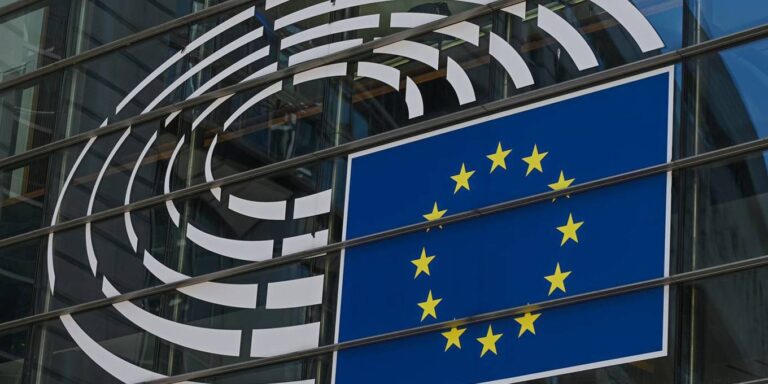
With the European Union’s pandemic recovery fund set to end in 2026, there is an urgent need for more durable financial mechanisms to support its long-term objectives. Fortunately, a new investment fund could both enhance the EU’s growth potential and ensure compliance with its new fiscal rules and shared values.
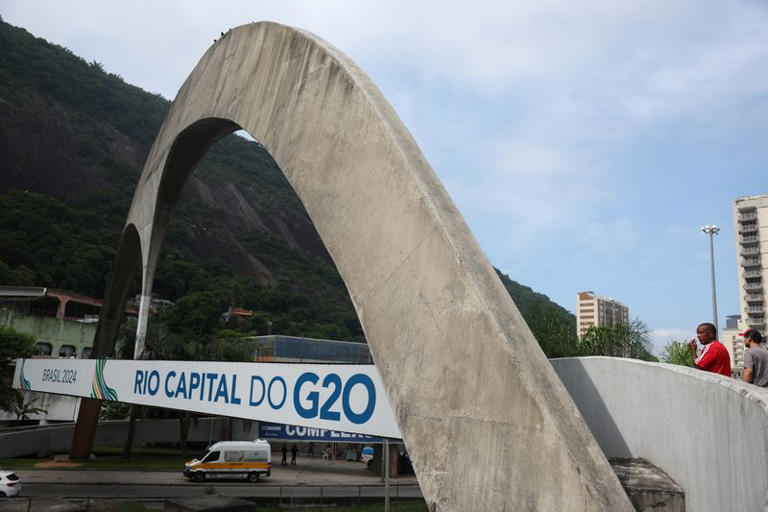
With their countries deeply divided over Israel’s attacks on Gaza, finance officials from the Group of 20 major economies are poised to set aside geopolitics and focus on global economic issues when they meet in Sao Paulo, Brazil this week.
Brazil, keen to ensure a productive session that delivers consensus on key economic priorities, has proposed a much shorter closing statement than seen in recent years – a move already negotiated with other members, according to a Brazilian government source and two sources familiar with the draft.
The South American country is the current G20 president.
The latest draft, still being finalized, mentions the risks of global fragmentation and conflicts in general terms but omits any direct reference to Russia’s invasion of Ukraine or the Israel-Gaza war, the sources said.
Finance officials and central bankers from the U.S., China, Russia and the world’s other largest economies will meet in Sao Paulo to review global economic developments at a time of slowing growth, the growing strains of record debt burdens, and worries that inflation may not yet be tamed, which are keeping interest rates high.
The International Monetary Fund last month said the chance of a “soft landing” in which inflation falls without triggering a painful global recession had increased, but warned that overall growth and global trade remained lower than the historical average.
Russia’s invasion of Ukraine almost exactly two years ago roiled the G20, exposing long-simmering fault lines within the group and thwarting efforts by G20 officials to reach consensus on a final statement, or communique, after their meetings.
India and Indonesia, which held the G20 presidency before Brazil, opted for chair statements summarizing areas of agreement and noting dissenting voices – namely Russia – but even that could prove difficult given the bitter divisions over the four-month war in Gaza. The war erupted when the ministers last met in Marrakech, Morocco in October, intensifying divisions between the United States and its Western allies, and non-Western countries in the G20.
Brazil, Saudi Arabia and South Africa have been outspoken critics of Israel’s relentless assault on Gaza since the Oct. 7 surprise attack in which Palestinian Islamist group Hamas killed around 1,200 people and seized 253 hostages, one G7 source said. The retaliatory attacks have killed more than 29,000 Palestinians, according to the Gaza health ministry.
The U.S., meanwhile, last week vetoed a draft United Nations Security Council resolution on the Israel-Hamas war, blocking a demand for an immediate humanitarian ceasefire and pushing instead for a temporary ceasefire linked to the release of the remaining hostages held by Hamas.
The deep differences over Gaza necessitated a different approach this year, the Brazilian official said, adding, “If the topic is included, there will be no consensus.”
To prevent differences over Gaza from derailing progress on economic issues, Brazil proposed a shorter statement with no specific mention of either war. Washington argued against language holding Israel accountable, which South Africa and others had argued was needed if the statement mentioned and condemned Russia’s war against Ukraine, a G7 source said.
G7 finance officials, also meeting in Sao Paolo, will be forceful in their condemnation of Russia and its war, a second G7 source said.
‘BROADER ETHOS’
Brazil wants to focus this week’s discussions on ending inequality and hunger, reforming international taxation, addressing sovereign debt distress and working toward sustainable development. Reforms of multilateral banks and climate finance will feature more prominently at the spring meetings of the IMF and World Bank in Washington in April, the Brazilian source and a G20 source said.
Mark Sobel, the U.S. chair of the Official Monetary and Financial Institutions Forum (OMFIF), said stripping geopolitics from the communique made sense for a group that had historically focused on economic and financial issues.
“Yes, it reflects fractiousness, but it also reflects this broader ethos of the finance ministers and central bankers to focus on economic and financial matters in a technical way,” he said.
One G7 official said the statement would likely be “concise and ambiguous, only mentioning issues where there’s no contention.”
U.S. Treasury Secretary Janet Yellen plans to underscore the importance of the G20 body, highlighting collaborative efforts to address global challenges such as sovereign debt and the COVID-19 pandemic, a senior U.S. official said.
Yellen will meet with Brazilian Finance Minister Fernando Haddad to celebrate 200 years of U.S.-Brazil relations, an event the Brazilian official said was designed to highlight the South American country’s “interest in not embracing a divisive approach, but focusing on constructive efforts.”
One unresolved issue is to what extent the U.S., Japan and Canada will prevail in demanding a mention of the economic impacts of geopolitical conflicts in the communique, the first Brazilian official said.
But the failure of G20 foreign ministers to include the issue sent a strong signal, the official said.
“The outcome of the sherpas meeting strengthens our understanding that the topic (of geopolitics) should not be included in the communique.”
Eric Pelofsky, a former senior U.S. official now with the Rockefeller Foundation, said there was value in meeting in configurations like the G20, despite clear differences.
“Sometimes talking without success is still talking. Maybe that means that at the end of the day, somebody has a coffee that they weren’t supposed to have and they find a bit of common ground that they weren’t supposed to know existed.”
Source: Reuters
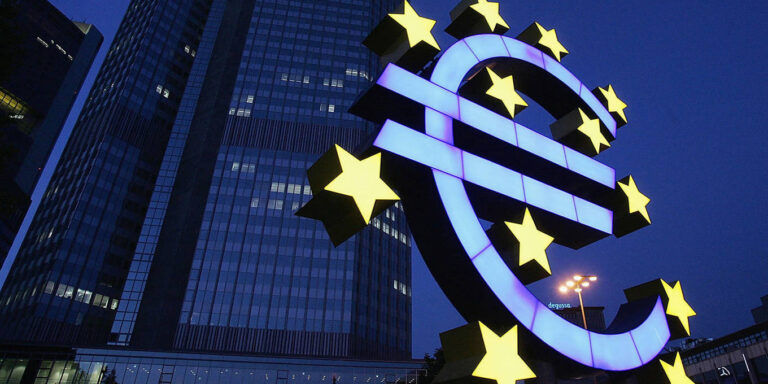
Prior to the introduction of the European single currency in January 1999, its architects foresaw a future of macroeconomic stability and accelerated growth. While the euro has delivered on some of these promises, it has failed to facilitate the continent’s economic and political integration.
FLORENCE – The 25th anniversary of the euro’s introduction, which has passed largely under the radar, offers an opportune moment to assess the current state of the greatest monetary experiment in modern history.
The euro’s launch in January 1999 polarized economists. In the face of much skepticism – the late American economist Martin Feldstein even argued that the single currency could trigger a war in Europe – the euro’s architects envisioned a future characterized by macroeconomic stability, anchored by an independent central bank and a fiscal framework geared toward stability. Structural reforms, which the European Union’s member states were expected to implement, were meant to enhance the monetary union’s capacity to adjust to shocks.
None of those scenarios materialized. Over the past quarter-century, the euro has shown extraordinary resilience, navigating through several critical challenges and defying early predictions of its collapse. But while the single currency has delivered on some of its promises – most notably, maintaining price stability for most of its existence – it has failed to boost Europe’s potential growth or facilitate the continent’s full economic and political integration.
This mixed record can be attributed largely to the fact that Europe’s economic union was incomplete from the outset. Despite the significant progress that has been made since its inception, the eurozone’s fiscal and economic frameworks remain woefully underdeveloped compared to its monetary infrastructure.
To understand the consequences of the eurozone’s unfinished architecture, it is useful to divide the past 25 years into four distinct periods. The first phase, from 1999 to 2008, could be labeled the “2% decade”: economic growth, inflation, and budget deficits (as a share of GDP) all hovered around this rate. This phase was characterized by the excessive optimism of the “Great Moderation.”
But the internal imbalances that emerged during this period would haunt the eurozone for years to come. The convergence of interest rates, evidenced by minimal spreads, resulted in overly sanguine portrayals of member states’ public finances. Simultaneously, loose fiscal and monetary conditions reduced European governments’ incentives to undertake structural reforms and bolster their banking systems.
Nominal convergence also masked more profound structural disparities, as capital flowed from the eurozone’s richest members to their poorer counterparts, where it was frequently channeled into less productive sectors, such as real estate and non-tradable services, often through instruments like short-term bank loans. Consequently, while the eurozone’s current accounts appeared balanced, significant imbalances emerged.
The fallout from the 2008 global financial crisis, particularly the discovery that Greece had lied about its budget deficits and debt, eroded trust among member states. The prevailing narrative shifted to one of moral hazard, emphasizing the need for each country to get its own house in order. By the time eurozone governments finally coordinated a response – establishing the European Stability Mechanism (ESM), launching the banking union project, introducing the European Central Bank’s Outright Monetary Transactions program, and expanding the ECB’s balance sheet – the euro appeared to be on the brink of collapse.
The key turning point was the pledge by then-ECB President Mario Draghi to do “whatever it takes” to preserve the euro in July 2012. But with monetary policy increasingly viewed as the “only game in town,” the eurozone’s economic and financial structures remained fragmented.
The COVID-19 crisis changed that. The exogenous nature of the pandemic shock, together with the lack of impending elections, enabled EU leaders – led by French President Emmanuel Macron, then-German Chancellor Angela Merkel, and European Commission President Ursula von der Leyen – to present a unified front, unencumbered by the pressure to avoid moral hazard. The EU suspended the Stability and Growth Pact, which had previously capped member states’ budget deficits at 3% of GDP, and rolled out the Support to mitigate Unemployment Risks in an Emergency and the NextGenerationEU recovery programs, financing both through common borrowing. Meanwhile, the ECB introduced its €1.85 trillion ($2 trillion) Pandemic Emergency Purchase Program.
Although this demonstration of collective leadership reassured markets, fueling an economic rebound, the optimism proved to be short-lived. A global inflationary surge, fueled by robust macroeconomic stimulus and pandemic-related supply-chain disruptions, was exacerbated by the energy-price shock that followed Russia’s full-scale invasion of Ukraine. Although European policymakers worked together to reduce the EU’s dependence on Russian gas, they failed to mount a collective response akin to the NextGenerationEU initiative. Confronted with rising deficits and debt, not to mention the most aggressive monetary-tightening cycle since the 1980s, EU countries have once again put eurozone reforms on hold.
Two important lessons follow from the euro’s first 25 years. First, the monetary union’s incomplete institutional framework has proven to be both costly and dangerous. Finalizing the banking union, especially the creation of a common resolution fund with the backstop of the ESM and deposit insurance, is essential to ensure stability and bolster the international role of the euro. Thus, Italy’s recent failure to ratify the ESM treaty is a serious setback. Pushing forward the capital market union is essential if Europe is to meet the financial challenges posed by the digital and green transitions. To achieve all of this, EU leaders must strike a balance between risk sharing and risk reduction.
Second, completing the euro is crucial for safeguarding and developing the EU’s greatest achievement: the single market. European countries’ current pursuit of national industrial policies, funded through state aid, undermines the core values of the single-market project. To address this challenge, the EU must formulate a cohesive European industrial policy. This should include an increase in cross-border investments, focusing on European public goods such as human-capital development, the availability of critical materials, and the green and digital transitions.
After the fall of the Berlin Wall, German Chancellor Helmut Kohl, French President François Mitterrand, and European Commission President Jacques Delors turned the dream of a single currency into a reality. During the COVID-19 crisis, Macron, Merkel, and von der Leyen managed to overcome seemingly insurmountable obstacles and achieve a historic breakthrough. Now, a quarter-century after its introduction, the euro requires visionary leaders to shepherd European sovereignty to its next phase.
This article draws on the CEPR Policy Insights February 1, 2024, paper “The First 25 Years of the Euro,” written under the auspices of the European University Institute’s Economic and Monetary Union Laboratory (EMU Lab).

Transatlantic Leadership Network Recognizes Author for Contributions to Peaceful Development in Eastern Mediterranean
WASHINGTON, DC November 9, 2023: Doha-based Lebanese author Roudi Baroudi was one of two people presented with the 2023 Transatlantic Leadership Award at a ceremony in Washington this week.
Although circumstances relating to the conflict in the Gaza Strip prevented Baroudi from attending the event, both he and Joshua Volz – the Deputy Assistant Secretary for Europe, Eurasia, Africa, and the Middle East and the Office of International Affairs at the US Department of Energy – were recognized by the Transatlantic Leadership Network (TLN). Each was cited at a gala dinner on Monday for his “valuable contribution in building a peaceful and prosperous Eastern Mediterranean” as part of the TLN’s 2nd Annual Conference on Freedom of the Media.
“I was deeply honored to be named a recipient of this prestigious award, and I will always be grateful for the many ways in which the TLN has supported my work for several years now,” Baroudi said. “I also look forward to working together in the future so that one day, our descendants can know the benefits of peace and coexistence. It is precisely in difficult and trying times that cooler heads must be able and willing to look at the reasons for current bloodshed and recrimination, then envision pathways to a better future.”
Baroudi, who serves as CEO of independent consultancy Energy and Environment Holding in Doha, is a long-time champion of dialogue, cooperation, and practical solutions to both the global climate crisis and recurrent tensions in the East Med. A regular speaker at regional energy and policy conferences, Baroudi’s insights are also avidly sought by local and international media, as well as governments, major energy companies, and investors.
Having advised both public and private sector actors on a wide variety of energy issues, Baroudi is widely credited with bringing unique perspective to all manner of policy discussions. He is the author of several books, including “Maritime Disputes in the Eastern Mediterranean: The Way Forward” (2021), and “Climate and Energy in the Mediterranean: What the Blue Economy Means for a Greener Future” (2022). Together with Notre-Dame University – Louaize, Baroudi has also published a study of the US-brokered October 2022 Maritime Boundary Agreement between Lebanon and Israel, and is currently preparing another volume on Lebanon’s prospects for similar deals with Cyprus and Syria.
The TLN describes itself as “a nonpartisan, independent, international network of practitioners, private sector leaders and policy analysts dedicated to strengthening and reorienting transatlantic relations to the rapidly changing dynamics of a globalizing world.”
Monday’s ceremony was attended by a broad cross-section of high-profile figures, including senior officials from the Departments of Energy and State, numerous members of Washington’s extensive diplomatic corps, and representatives of both international organizations and various media outlets.
AMSTERDAM – Following weeks of intense negotiations, the European Union has agreed to revise its fiscal rules. The new rulebook will replace the Stability and Growth Pact (SGP) – which has been suspended since the start of the COVID-19 pandemic – and modernize the bloc’s 25-year-old fiscal framework.
While the SGP featured a one-size-fits-all model that ultimately undermined its credibility, the updated fiscal rules allow for a differentiated approach. The goal is to maintain the existing deficit and public debt limits while still encouraging member states to invest in green and digital technologies. Member states will be granted extended adjustment periods of up to seven years to reduce their debts to sustainable levels, provided they commit to reforms and investments that support this double (green/digital) transition.
But while the EU’s efforts to strike a balance between fiscal discipline and growth incentives are commendable, national budgets alone will not be enough to finance the EU’s ambitious double transition. The European Commission estimates that an annual investment of roughly €650 billion ($700 billion) is needed to meet the 2030 targets of producing at least 42.5% of the bloc’s energy from renewable sources and reducing greenhouse-gas emissions by 55%.
Under the new fiscal rules, funding for digital and green investments can be sourced from the €800 billion NextGenerationEU fund, which was established in 2020 to help European economies recover from the COVID-19 shock. But since the NGEU is scheduled to end in 2026, there is an urgent need for more durable financial mechanisms to support the EU’s long-term objectives.
As matters stand, the NGEU’s focus on national investments has left transnational projects such as high-speed railways and hydrogen infrastructure severely underfunded. Moreover, the US Inflation Reduction Act has widened the investment gap between Europe and the United States. To restore its strategic autonomy, European leaders should build on the success of the NGEU.
In a forthcoming paper, we propose the establishment of a $750 billion EU public-goods fund aimed at bridging funding gaps in crucial areas like renewable energy and digital infrastructure. The primary focus of this fund would be to catalyze cross-border investments and support projects that struggle to secure funding without EU-level financial support. By making access to this fund contingent on compliance with the new fiscal rules, the EU could maintain fiscal discipline among member states.
The public-goods fund, which would cover the 2026-30 period, is intended to align seamlessly with the EU’s climate goals. Building on the successful precedents established by previous EU borrowing initiatives, it would be financed by issuing EU bonds, backed by pooled national guarantees, the EU’s budget (bolstered by sufficient revenue streams), or both. Its proposed size represents roughly one-fifth of the bloc’s total investment needs through 2030, and the remaining investments would be financed through contributions from member states and the private sector.
By focusing on cross-border investments, the fund would underscore the EU’s unified approach to tackling European challenges. At the same time, the requirement to comply with the new fiscal rules would broaden the conditional framework established by the NGEU program, which linked fund access to the rule of law in recipient countries.
Similarly, the proposed conditionality regime would tie access to the new fund to domestic fiscal discipline, thus aligning with the EU’s revised fiscal guidelines. Rather than facing penalties for non-compliance, as was the case under the previous SGP, countries would be incentivized to demonstrate fiscal responsibility.
Thus, the conditionality regime would simultaneously boost the EU’s growth potential, uphold the integrity of the new fiscal rulebook, and encourage fiscal sustainability among member states. Moreover, increased debt issuance at the European level could be offset by reduced debt issuance at the national level.
Once the fund is established, countries would be encouraged to submit comprehensive investment proposals for transnational projects. The European Investment Bank would determine whether they are eligible to access the fund’s resources based on their alignment with the EU’s double-transition targets and the potential for positive cross-border spillovers. Meanwhile, the European Commission would ascertain that the countries proposing these projects comply with fiscal rules.
The fund’s proposed design aligns with the trend of using EU funds to achieve broader policy objectives. By relying on the successful model of the pandemic recovery fund and the bloc’s current conditionality regime, it would empower the EU to meet crucial climate targets while upholding its shared values.